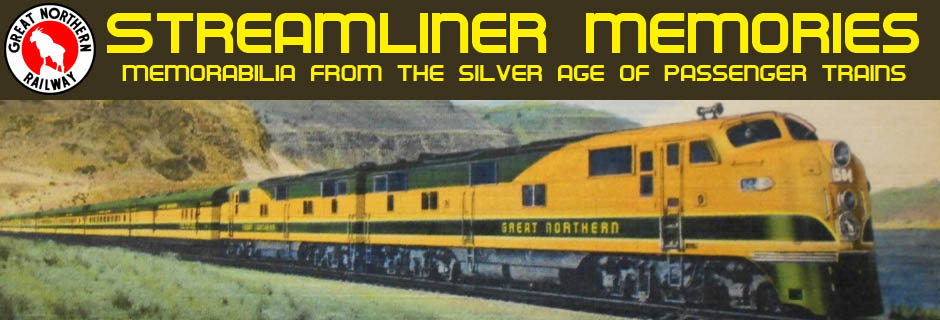One-upping the Great Northern, Northern Pacific advertises that its North Coast Limited is not only air-conditioned, but roller-bearinged. This refers primarily to the railroad’s steam locomotives: NP bought the Timken “Four Aces“–locomotive 1111, the first to be fully outfitted with roller bearings–in 1933, renumbering it 2626, and from then on all new locomotives purchased by the NP were built with roller bearings.

Click image to download a 7.6-MB PDF of this 8-page brochure.
By contrast, nearly all of Great Northern’s steam locomotives were purchased with conventional “friction” bearings, which got their name because there was a lot of friction between the axle and the race in which it was set. However, many if not most of GN’s passenger steam locos were eventually converted to roller bearings. The main advantage of roller bearings was that they saved energy; from the passenger’s view, roller bearings did not add to the comfort or speed of the ride.
Rumor has it that the NP accidentally damaged the 1111 when it was testing it in Washington state, which is why it purchased it. That may be true, but the 1111 was very similar to the 4-8-4 locomotives previously built for the NP; the 4-8-4 wheel class is usually called a “Northern” because the NP was the first railroad to use it.

This photo shows a friction bearing, with semi-circular race resting on the axle. The cotton wadding under the axle soaked up oil and distributed lubricant to the axle surface. Roller bearings were expensive, so many railroads continued to purchase locomotives and other equipment for well over a decade after Timken introduced the first roller-bearinged steam locomotive.
Page 2 of the undated brochure has a photo of an NP 4-8-4 with roller bearings. It appears to be an A-2 orA-3 class locomotive, which would date the brochure after 1934, when the A-2s were built. Someone has written “Dec. 7, 1942” on the front of the brochure, but it was probably printed at least a year before that as war-time restrictions would have kept the railroad from advertising the train with such a nice brochure.
